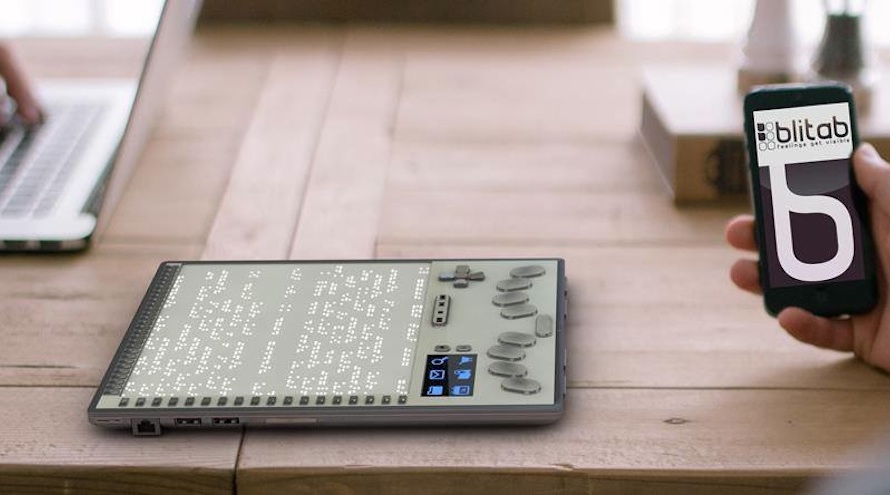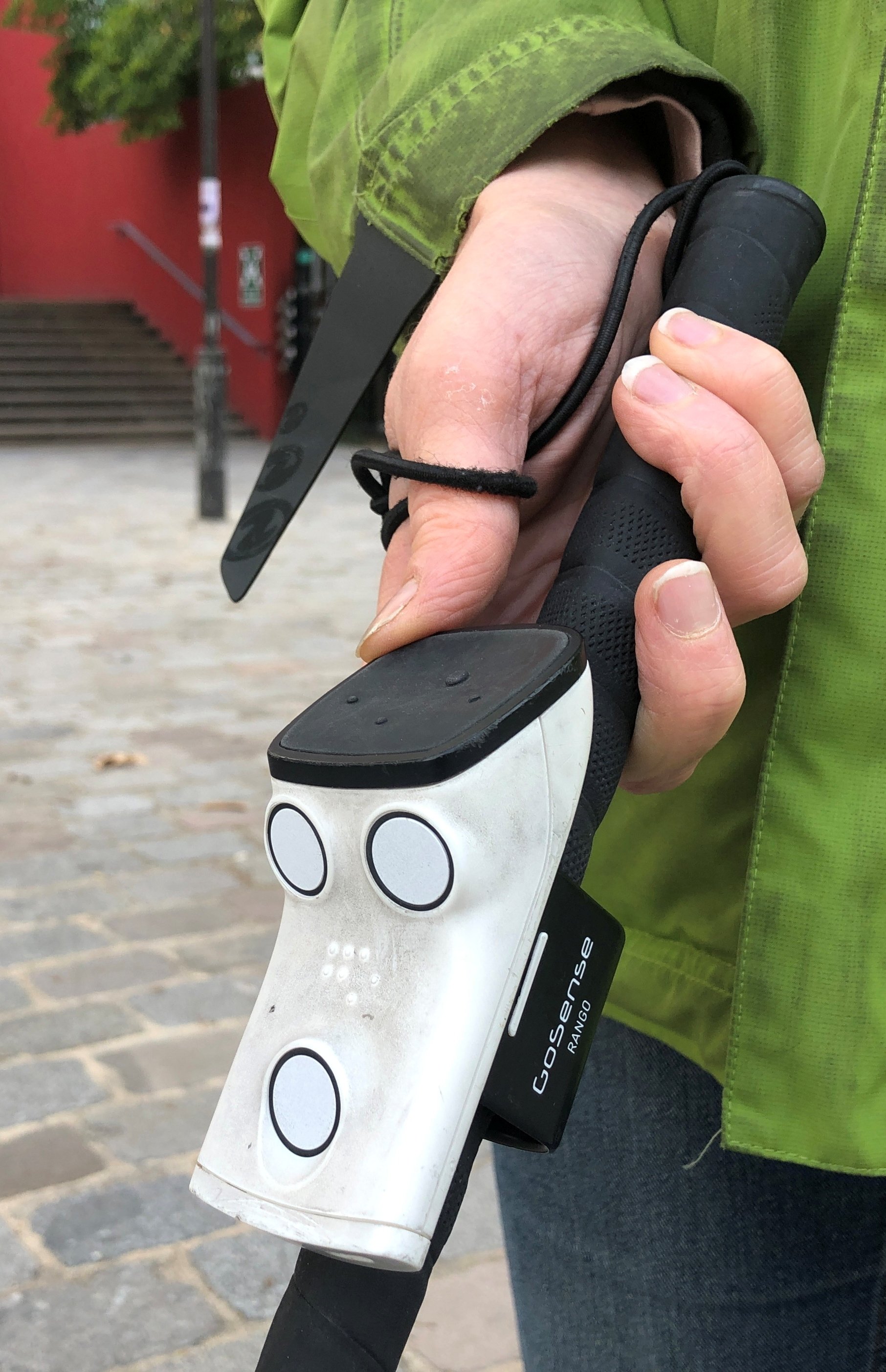Enhancing Lives With Advanced Assistive Tools for the Blind
The combination of sophisticated assistive gadgets for the blind is transforming how individuals experience their environments and communicate with their communities. What does this evolution imply for the future of assistive technology and its role in empowering individuals?
Summary of Assistive Devices
Assistive devices for the blind encompass a varied variety of technologies and devices created to enhance freedom and boost the quality of life for people with aesthetic problems. These devices deal with numerous demands, from navigation and flexibility to communication and daily job administration.
One of the key categories of assistive tools includes movement aids, such as white walking canes and guide pet dogs, which aid customers navigate their environments safely. Digital travel help, equipped with sensing units and audio feedback, also play a substantial function in flexibility enhancement.
Additionally, gadgets that help with everyday living tasks, such as flexible kitchen devices, Braille tags, and chatting watches, empower individuals to do tasks individually. Communication aids, including screen visitors and Braille displays, assist in access to information and make it possible for people to engage effectively with the digital world.
Additionally, low-tech solutions like magnifying glasses and large-print products remain vital for numerous customers. Collectively, these assistive gadgets serve not just as functional devices but also as vital enablers of freedom, cultivating greater participation in a world that typically prioritizes sighted experiences. Their integration right into life is important for advertising inclusivity and improving overall wellness for those with aesthetic problems.
Cutting-edge Technologies being used
Technology in technology has considerably transformed the landscape of tools offered for people with visual disabilities. Amongst one of the most remarkable innovations are clever glasses incorporated with increased fact, which give real-time navigating aid and things acknowledgment. These tools take advantage of progressed cams and expert system to deliver acoustic hints, boosting the customer's spatial recognition and freedom.
Additionally, mobile applications have emerged as effective sources, making it possible for customers to recognize currency, reviewed message aloud, and browse unknown atmospheres with verbal guidelines. Devices such as Braille screens and refreshable Braille devices continue to advance, using smooth connectivity with computer systems and mobile phones, thus enhancing interaction and accessibility to information.
Wearable modern technology, consisting of smartwatches furnished with voice-activated features, better equips users by facilitating fast access to notifications and informs without needing aesthetic interaction. Responsive maps and 3D printing are additionally getting grip, supplying tangible depictions of areas that aid in alignment and flexibility training.
Collectively, these cutting-edge modern technologies not just enhance the day-to-day lives of aesthetically damaged individuals but likewise foster greater self-reliance, inclusivity, and involvement with the wider community, consequently reshaping understandings of accessibility. (AI-powered visual aids)
Individual Stories of Empowerment
Empowerment typically arises from individual experiences that highlight the transformative impact of innovation on people with aesthetic impairments. Take, for circumstances, the story of Sarah, a young musician that restored her passion for paint via using a wise walking resource stick equipped with obstacle discovery. This device not only facilitated her wheelchair yet instilled a newly found self-confidence, allowing her to navigate public spaces separately and seek her innovative undertakings.

These narratives underscore the profound results that advanced assistive devices can carry day-to-day life. By enabling people to conquer obstacles, modern technology cultivates a sense of freedom and self-worth. Such empowerment tales serve as a testimony to the potential of advancement, showing just how the right tools can dramatically improve top quality of life and open doors to new opportunities for those with visual disabilities.
Advantages of Advanced Solutions
The integration of advanced innovation into assistive gadgets substantially changes day-to-day experiences for those influenced by vision loss. Speech-to-text devices for low vision. Devices such as smart canes equipped with sensing units, navigating applications, and wearable innovation are developed to offer real-time feedback, enhancing spatial awareness and reducing the risks associated with mobility.
Moreover, progressed assistive modern technologies promote social addition by helping with communication and communication. Voice-activated devices and applications permit people to gain access to information and involve with their environments separately, breaking obstacles that previously hindered their engagement in instructional, expert, and social settings.
On top of that, the personalization and flexibility of these solutions satisfy the diverse demands of customers, therefore boosting their total lifestyle. Boosted functionality, such as item recognition and text-to-speech capacities, empowers people with visual problems to carry out tasks that they might have when found challenging. Inevitably, advanced assistive modern technologies not only improve freedom and safety yet likewise advertise dignity and self-worth, allowing individuals to lead fulfilling lives.
Future Patterns in Assistive Tech
As innovation remains to progress, the landscape of assistive devices for the blind is poised for impressive innovations that will better enhance access and freedom. Arising fads in assistive innovation show a shift towards raised combination of expert system (AI) and machine understanding, enabling tools to adjust to private customer needs in real-time. These developments are anticipated to help with even more instinctive navigation systems that can determine barriers and provide audio comments, considerably boosting exterior wheelchair.
In addition, the growth of wearable like this technology, such as clever glasses equipped with augmented truth, will certainly permit users to receive contextual info regarding their surroundings, therefore improving their spatial understanding. Advancements in haptic technology guarantee to produce tactile feedback devices, enabling users to perceive information through touch, enhancing learning and communication with their environment.
Telecommunication advances are likewise leading the way for remote support services, where trained professionals can provide guidance via video telephone calls, ensuring assistance is easily obtainable. As these fads unravel, the future of assistive gadgets for the Recommended Reading blind will unquestionably foster greater freedom, equipping individuals to browse their world with confidence and convenience.

Conclusion
The integration of innovative assistive gadgets for the blind represents a considerable advancement in promoting freedom and enhancing lifestyle. By utilizing innovative modern technologies, these tools empower individuals to browse their settings with better confidence and autonomy. As the area continues to develop, continuous r & d will likely yield even much more advanced remedies, better transforming the lived experiences of individuals with visual impairments and promoting a greater sense of addition within society.
The combination of sophisticated assistive gadgets for the blind is changing how individuals experience their surroundings and interact with their areas. The integration of innovative technology into assistive devices considerably transforms daily experiences for those affected by vision loss.As technology proceeds to advance, the landscape of assistive devices for the blind is poised for remarkable improvements that will further enhance accessibility and freedom. Arising patterns in assistive technology indicate a change towards increased integration of man-made intelligence (AI) and device learning, making it possible for gadgets to adjust to specific user requires in real-time.The combination of innovative assistive devices for the blind represents a significant innovation in fostering freedom and improving high quality of life.